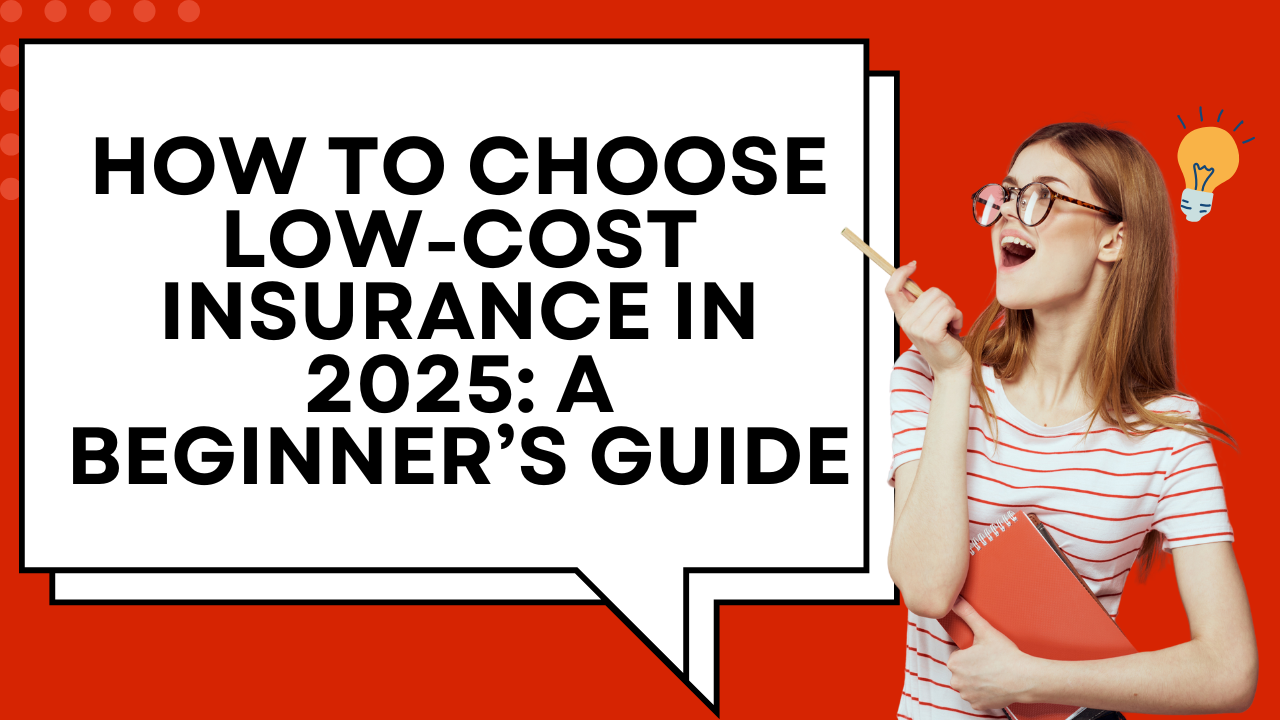Navigating the world of insurance can feel overwhelming, especially for first-time buyers. In 2025, with an increasing variety of plans and providers, it’s crucial to find affordable insurance that meets your needs without compromising on quality. Whether you’re looking for health, auto, life, home, or travel insurance, understanding the key factors can help you make informed decisions. This guide will walk you through the steps to choose low-cost insurance while ensuring adequate coverage.
1. Understand Your Insurance Needs
The first step in selecting low-cost insurance is identifying your specific requirements. Ask yourself:
- What type of coverage do I need (e.g., health, auto, home, etc.)?
- How much coverage is necessary based on my lifestyle and assets?
- What is my budget for monthly premiums?
For example, a young professional might prioritize affordable health insurance, while a homeowner may need comprehensive home insurance. Clearly defining your needs will help you focus on suitable options.
2. Explore Different Types of Insurance
Familiarize yourself with the various types of insurance available in 2025:
- Health Insurance: Covers medical expenses, including routine check-ups, hospital stays, and prescriptions.
- Auto Insurance: Provides financial protection in case of accidents, theft, or damage to your vehicle.
- Life Insurance: Ensures financial support for your loved ones in the event of your passing.
- Home Insurance: Protects your property and belongings from unforeseen events like theft or natural disasters.
- Travel Insurance: Covers trip cancellations, medical emergencies, and lost baggage during travel.
Each type of insurance has unique benefits and costs. Determine which ones are essential for your situation.
3. Compare Plans and Providers
Once you know your needs, compare multiple insurance plans and providers. Look for:
- Premium Costs: Ensure the monthly or annual premiums fit your budget.
- Coverage: Review what the policy covers and any exclusions.
- Deductibles: Understand how much you’ll need to pay out-of-pocket before insurance kicks in.
- Network Providers: For health insurance, check if your preferred doctors and hospitals are included.
- Customer Reviews: Read reviews to gauge customer satisfaction and claim settlement efficiency.
Online comparison tools can simplify this process by providing side-by-side comparisons of policies and rates.
4. Leverage Discounts and Bundling Options
Many insurance providers offer discounts and incentives to lower your premiums. Some common ways to save include:
- Multi-Policy Discounts: Bundle multiple policies, such as home and auto insurance, with the same provider.
- Safe Driver Discounts: Maintain a clean driving record to qualify for reduced auto insurance rates.
- Healthy Lifestyle Discounts: Participate in wellness programs to lower health insurance premiums.
- Security Discounts: Install safety devices like alarms or cameras to reduce home insurance costs.
Ask your insurer about available discounts and eligibility requirements to maximize savings.
5. Understand Policy Terms and Conditions
Low-cost insurance often comes with specific limitations or exclusions. Carefully review the policy’s terms and conditions to avoid surprises. Key aspects to consider include:
- Exclusions: What events or situations are not covered by the policy?
- Claim Limits: Is there a maximum payout for claims?
- Renewal Terms: Are there restrictions on renewing the policy?
- Cancellation Fees: What happens if you need to cancel the policy prematurely?
Being aware of these details ensures you choose a plan that aligns with your expectations.
6. Work with an Insurance Broker
If you find the process confusing, consider consulting an insurance broker. Brokers are experienced professionals who can:
- Help you identify the best policies based on your needs and budget.
- Negotiate better rates with providers.
- Clarify complex terms and conditions.
While brokers may charge a fee, their expertise can save you money and time in the long run.
7. Opt for Higher Deductibles
Choosing a higher deductible is a common strategy to lower insurance premiums. A deductible is the amount you pay out-of-pocket before insurance coverage begins. For example:
- Increasing your health insurance deductible from $500 to $1,000 can significantly reduce monthly premiums.
- Opting for a higher auto insurance deductible can lower your annual costs, especially if you’re a safe driver.
However, ensure you have enough savings to cover the deductible in case of a claim.
8. Monitor Your Coverage Regularly
Insurance needs can change over time due to life events such as marriage, home purchases, or job changes. Review your policies annually to ensure they still meet your requirements. Adjusting your coverage can help you avoid overpaying for unnecessary features or identify areas where additional coverage is needed.
9. Avoid Common Mistakes
When shopping for low-cost insurance, steer clear of these pitfalls:
- Focusing Only on Price: While affordability is important, inadequate coverage can lead to costly out-of-pocket expenses.
- Overlooking Add-Ons: Failing to consider optional riders or add-ons may leave you underinsured.
- Ignoring Reviews: Skipping customer feedback can result in choosing an unreliable provider.
- Delaying Purchase: Waiting too long to secure coverage can lead to higher premiums or denied claims.
10. Check for Government Programs and Subsidies
In 2025, many governments offer subsidies and assistance programs for insurance. For instance:
- Health insurance marketplaces provide affordable options for low-income individuals and families.
- Subsidized auto insurance programs are available in some regions for low-income drivers.
Research available programs in your area to determine if you qualify for additional savings.
Conclusion
Choosing low-cost insurance in 2025 doesn’t have to be complicated. By understanding your needs, comparing options, leveraging discounts, and staying informed, you can find affordable policies that offer comprehensive coverage. Remember to review your policies regularly and seek professional advice when needed. With the right approach, you can protect yourself and your loved ones without straining your budget. Start exploring your options today to secure the best insurance for your needs.
